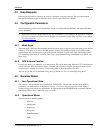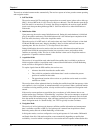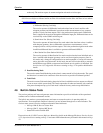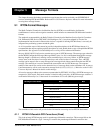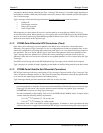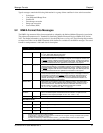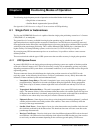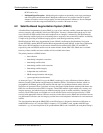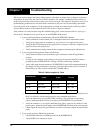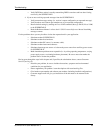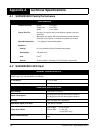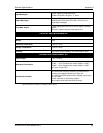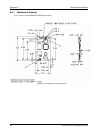
Positioning Modes of Operation Chapter 6
SUPERSTAR II User Manual Rev 3 39
OCXO, and so on).
• Multipath Signal Reception – Multipath signal reception can potentially cause large pseudorange
and carrier phase measurement biases. Multipath conditions are very much a function of specific
antenna site location versus local geography and man-made structural influences. Severe multipath
conditions could skew range measurements by as much as 100 meters or more.
6.2 Satellite-Based Augmentation System (SBAS)
A Satellite-Based Augmentation System (SBAS) is a type of geo-stationary satellite system that improves the
accuracy, integrity, and availability of the basic GPS signals. Accuracy is enhanced through the use of wide
area corrections for GPS satellite orbits and ionospheric errors. Integrity is enhanced by the SBAS network
quickly detecting satellite signal errors and sending alerts to receivers to not use the failed satellite. Availability
is improved by providing an additional ranging signal to each SBAS geostationary satellite.
SBAS includes the Wide-Area Augmentation System (WAAS), the European Geo-Stationary Navigation
System (EGNOS), and the MTSAT Satellite-Based Augmentation System (MSAS). At the time of publication,
there are two WAAS satellites over the western Atlantic Ocean and the Pacific (PRN 122 and PRN 134
respectively) and one EGNOS satellite over the eastern Atlantic Ocean (PRN 120). SBAS data is available
from any of these satellites and more satellites will be available in the future.
The primary functions of SBAS include:
• data collection
• determining ionospheric corrections
• determining satellite orbits
• determining satellite clock corrections
• determining satellite integrity
• independent data verification
• SBAS message broadcast and ranging
• system operations & maintenance
As shown in Figure 7, The SBAS Concept, the SBAS is made up of a series of Reference Stations, Master
Stations, Ground Uplink Stations and Geostationary Satellites (GEOs). The Reference Stations, which are
geographically distributed, pick up GPS satellite data and route it to the Master Stations where wide area
corrections are generated. These corrections are sent to the Ground Uplink Stations which up-link them to the
GEOs for re-transmission on the GPS L1 frequency. These GEOs transmit signals which carry accuracy and
integrity messages, and which also provide additional ranging signals for added availability, continuity and
accuracy. These GEO signals are available over a wide area and can be received and processed by L1 GPS
receivers with appropriate firmware. GPS user receivers are thus able to receive SBAS data in-band and use not
only differential corrections, but also integrity, residual errors and ionospheric information for each monitored
satellite.
The signal broadcast through the SBAS GEOs to the SBAS users is designed to minimize modifications to
standard GPS receivers. As such, the GPS L1 frequency (1575.42 MHz) is used, together with GPS-type
modulation - e.g. a Coarse/Acquisition (C/A) pseudorandom (PRN) code. In addition, the code phase timing is



